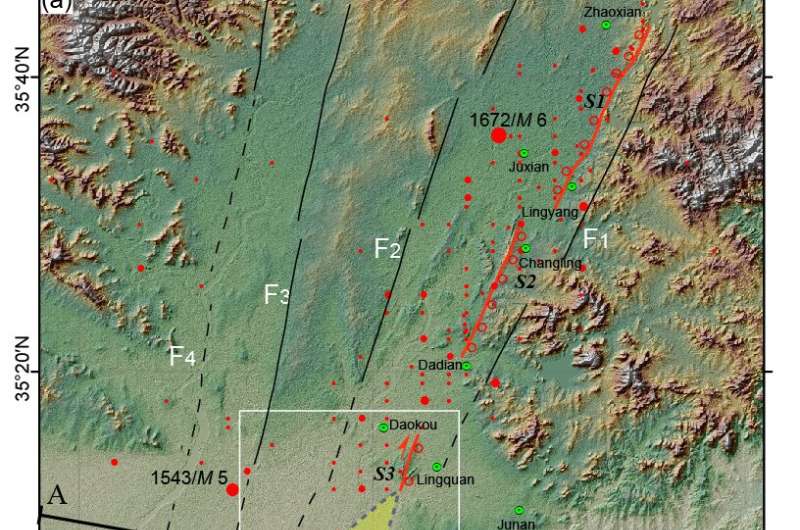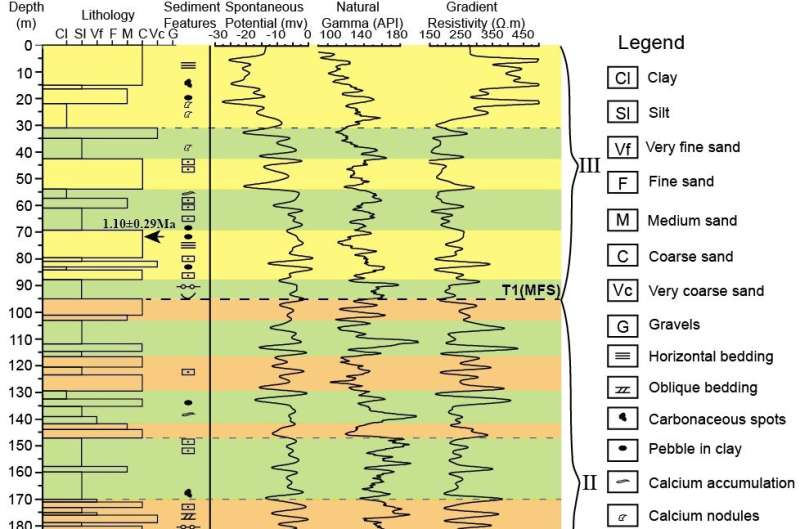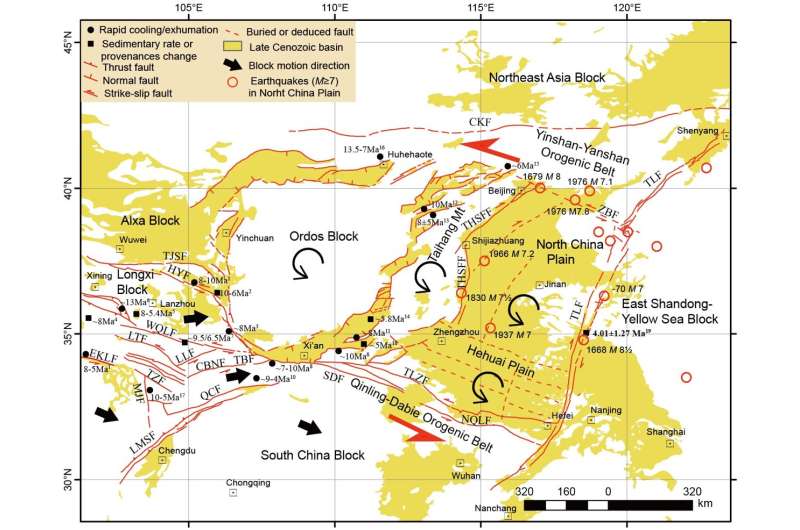This article has been reviewed according to Science X's editorial process and policies. Editors have highlighted the following attributes while ensuring the content's credibility:
fact-checked
peer-reviewed publication
trusted source
proofread
When and how did dextral strike-slip movement of the Tanlu Fault Zone in the late Cenozoic occur?

The sedimentary history of the pull-apart basin faithfully records the strike-slip process of the faults that control the development of the pull-apart basins. The Banquan Basin is the largest and most typical pull-apart basin along the surface rupture zone of the 1668 Tancheng M8½ earthquake where the TLFZ shows the strongest seismic activity.
The researchers (Peng Shu, Xiwei Xu, Shaoying Feng, et al.,) studied the sedimentary and tectonic evolution of the Banquan Basin by seismic reflection exploration, borehole detection and cosmogenic nuclide chronology, analyzed the coupling relationship between the pull-apart basin and the strike-slip fault and discussed the start time and tectonic significance of the right-lateral strike-slip of the TLFZ. The researchers recently published their study results in Science China Earth Sciences. The following are several major conclusions of this study.
The study showed that the Banquan basin has undergone three main evolutionary stages. During the pre-pull-apart period, the TLFZ that controls the evolution of the basin showed very weak activity, and then fault activity intensified and led to two periods of pull-apart and extension of the basin. During these two periods, especially in the second period of pull-apart and extension, fault activity migrated to the central basin. Then, the basin expansion reached its peak.

Following that period, the basin entered the subsidence stage. New strike-slip fault formed in the center of the basin, which effectively accommodated normal faulting of the boundary faults of the basin and caused the basin to shrink and die out.
The sedimentary filling and depositional cycle of the basin has strong response to the episodic pull-apart and extension of the basin. Before the intense pull-apart, a thin layer of Miocene mudstone slowly accumulated in the basin due to local rifting. In the early and late stages of pull-apart and extension, the basin was successively filled with coarse-grained alluvial fan facies (sedimentary system I) and braided river-meandering river facies (sedimentary system II) with frequent facies changes.
During the subsidence stage of post-pull-apart, the basin was filled with a set of floodplain facies deposits (sedimentary system III).

The sedimentary and tectonic evolution of the Banquan Basin was directly controlled by strike-slip movement of the TLFZ. The latest tectonic movement of the TLFZ in late Cenozoic was dominated by episodic dextral strike-slip movement that started at 4.01±1.27 Ma. By comprehensive analysis of dynamic background of eastern China, the authors held that the latest tectonic deformation of the North China Plain has been governed by the eastward tectonic extrusion and orogenesis of the eastern margin of the Tibetan Plateau since late Miocene.
The eastward thrusting of the Liupanshan fault zone and sinistral shearing of the Qinling fault zone led to anticlockwise rotation and pushing of secondary blocks in North China, resulting in a planar bookshelf faulting and rotation pattern. This unique deformation pattern transferred eastwards to the North China Plain at ~4.01 Ma and the process continues to the present time.
This planar bookshelf rotation, accompanied with regional sinistral strike-slip movement of the ~EW-trending boundary fault zones to the north and south of the North China Block and dextral strike-slip motion of the NNE-trending boundary faults between secondary blocks, is likely to be the long-range effect of the strong extrusion of the eastern margin of the Tibetan Plateau.
More information: Peng Shu et al, Sedimentary and tectonic evolution of the Banquan pull-apart basin and implications for late Cenozoic dextral strike-slip movement of the Tanlu Fault Zone, Science China Earth Sciences (2023). DOI: 10.1007/s11430-022-1028-5
Journal information: Science China Earth Sciences
Provided by Science China Press





















